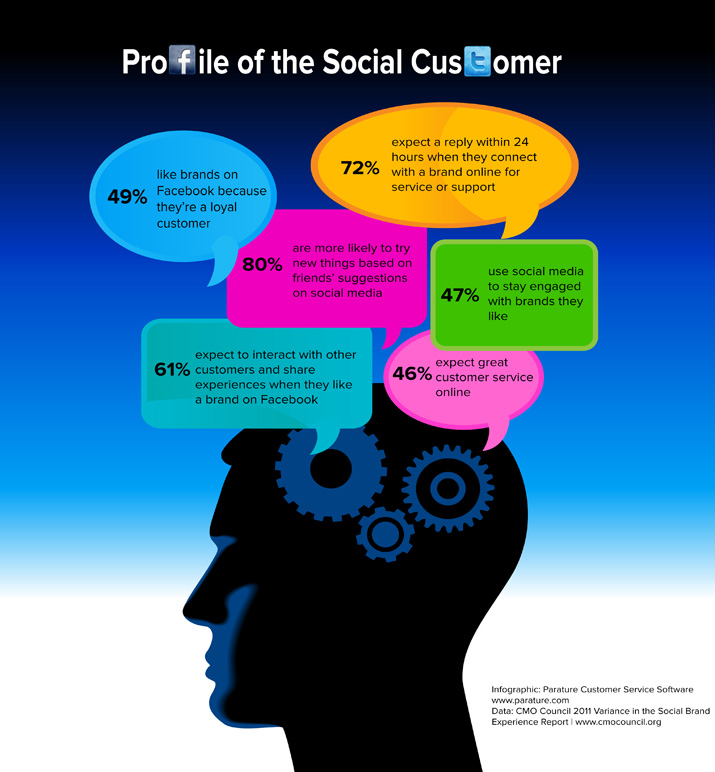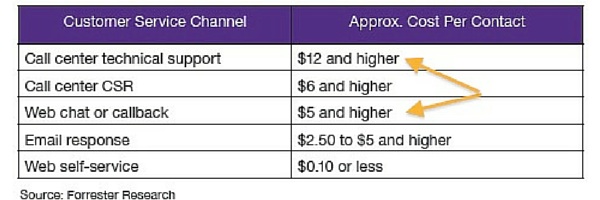The shift towards Social Customer Self-Service

 “Good morning sir/madam, how can I help you?”
“Good morning sir/madam, how can I help you?”
This simple phrase may sound a bit old-fashioned in the future, much like sending postcards is in 2015. Still some people do that but, nowadays, very few. Similarly, an increasing portion of customer care is shifting from phone/email towards self-service channels which means that customers do not necessarily need to interact with other people in order to get what they want; they just click and help themselves.
Like it or not this is a global trend affecting most of the markets, so that brands are facing new challenges in order to fully satisfy their customers and reach their business goals.
Challenge #1 ⇒ Save customer’s time to save money
Websites are the perfect hubs for self-service. In fact your brand may use them in proactive ways:
- By anticipating customers questions using an FAQ page with the most frequent questions and answers. That’s a very good way to reduce the volume of incoming contacts (i.e. phone calls, incoming emails, etc.) thus enabling your agents to focus their efforts on more complex issues.
- By integrating live chats that customers can use to interact in real time whenever they need information. In this case, conversations take place only if and when customer needs them. This way, customer agents are able to handle more conversations via chat than when having phone conversations.
A Forrester’s survey has compared the cost per contact as per different customer service channels and the results are crystal clear: web self-service is by far the cheapest one and web chat is also much cheaper than call centre technical support.
TIP: if you are considering adding a chat and need some advice on different providers, I’m sure you’ll enjoy this full comparative analysis by Business.com.
Challenge #2 ⇒ Make it simple but keep it human
The second challenge is the result of the first one. Once you’ve reduced costs and improved effectiveness of your Social Customer Service team, you have to make sure that your customer is not feeling let down.
I know it may seem a contradiction but it’s not.
Since self-service reduces the number of interactions between customers and brands, the latter may assume that receiving few contacts via chat is a positive signal but such a ‘no news = good news’ approach is very hazardous. In fact if we consider that on average only 4% of satisfied customers complain, brands need to be hungry for feedback especially when offering self-service channels.
Therefore it is crucial to ignite trust with your customers and, in order to be successful, you have to ask questions to you customer such as:
- How was your overall experience?
- What did you appreciate the most?
- What change would increase your satisfaction?
The above questions let the customer feel that you care about him/her as a person because you are curious to know his/her opinions. At the same time you get valuable information and feedback that help prevent you from crashing into an iceberg.
Your turn
Making money and keeping customers are going hand in hand.
On one hand, brands are using technology to save time for customers, reduce cost and make more profits, while on the other hand, even the most tech-savvy customer needs a human touch.
So what do you think is the right balance?
Image/Infographic: http://www.parature.com/profile-of-the-social-customer-infographic/
Paolo Fabrizio
Latest posts by Paolo Fabrizio (see all)
- Get Your Digital Timing Aligned With Your Customers - August 8, 2023
- 3 Reasons To Keep Things Simple For Your Customers - July 5, 2023
- How Do You Fix An Issue With Your Customer? - June 5, 2023


